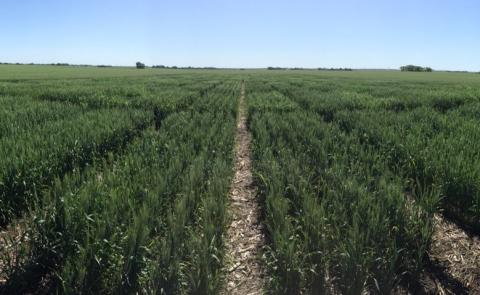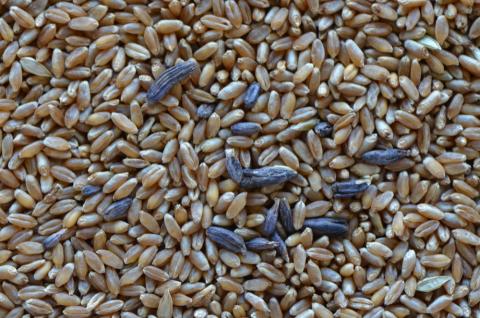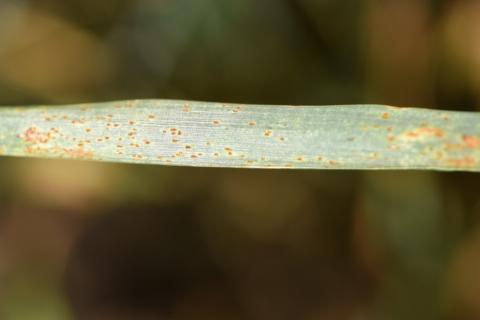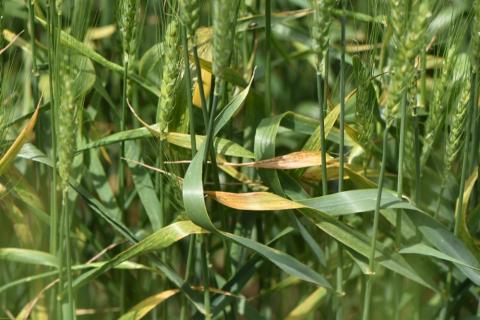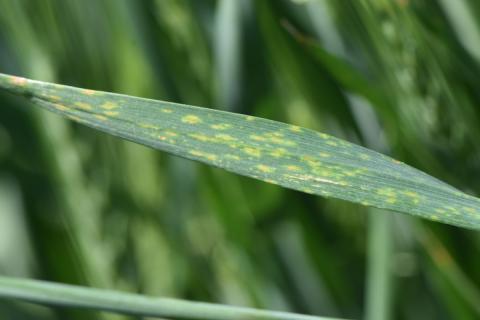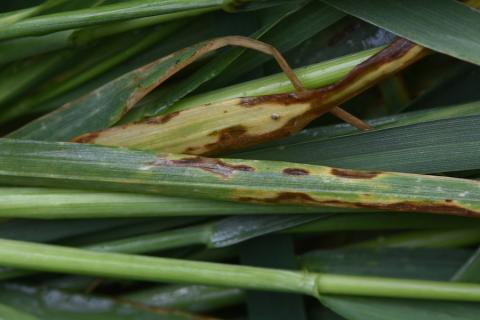Winter Wheat Varieties With an East and South Central Nebraska Fit
September 1, 2020
Variety selection and disease management in this higher rainfall region of Nebraska are the two most important management factors driving yield.
Reducing Yield Loss in Wheat Through Fungicide Seed Treatments
September 1, 2020
Three strategies can be used in combination to manage seed transmitted fungal diseases of wheat: fungicide seed treatments, use of clean seed, and planting resistant varieties.
Wheat Disease Update: June 10
June 11, 2020
As of June 10, diseases in Nebraska wheat fields remained at trace to low levels. Stripe rust was detected in a grower’s field in southeast Nebraska (Thayer County) on May 27, but hot and dry weather prevented its development.
Wheat Disease Update: June 2
June 2, 2020
Disease levels are low in most Nebraska wheat fields. Current hot daytime temperatures and dry conditions will keep disease levels low in areas that do not receive rainfall.
Wheat Disease Update: Stripe Rust Confirmed in Nebraska
May 28, 2020
During a survey of wheat fields in south central and southeast Nebraska on May 27, stripe rust was found at trace levels in a grower’s wheat field in Thayer County in southeast Nebraska.
Wheat Disease Update – Barley Yellow Dwarf and Fungal Leaf Spots Increasing
May 21, 2020
A survey of wheat fields in southern west central Nebraska (Furnas and Harlan Counties) on May 19 found most fields to have little or no disease. Two fields had a high incidence of barley yellow dwarf.
Wheat Diseases Developing, Scout Fields for Early Detection
May 15, 2020
Reports from the wheat growing regions in Nebraska indicate low or no disease pressure in most growers’ fields. However, some fields are showing low to moderate levels of disease.
Wheat Disease Update
May 7, 2020
Reports indicate that stripe rust is present in Oklahoma and northeast Kanas. These reports suggest that there is a high likelihood that stripe rust will occur in Nebraska wheat fields. Leaf rust is also likely to occur, but we expect to see stripe rust first.
